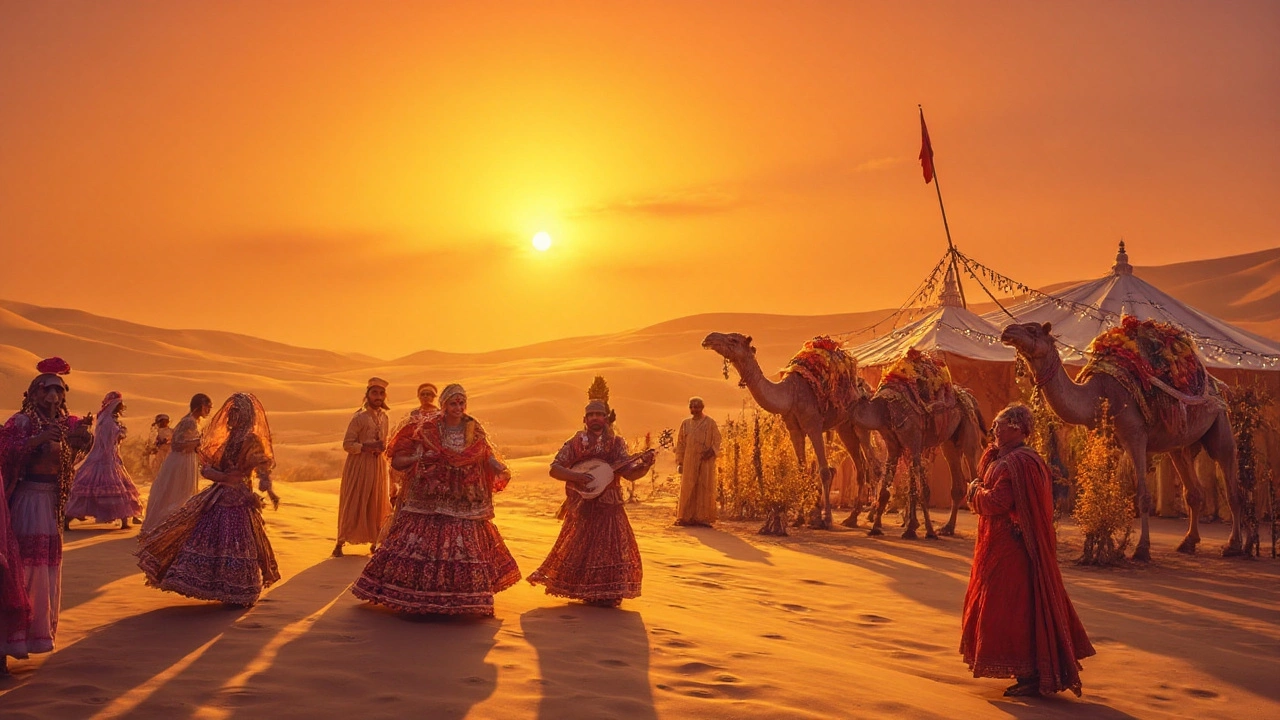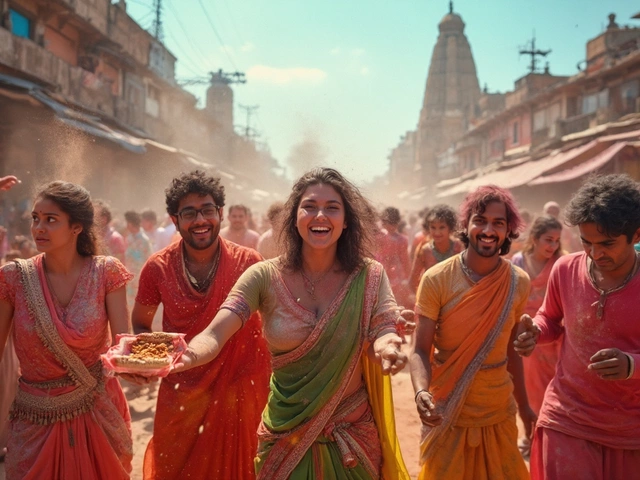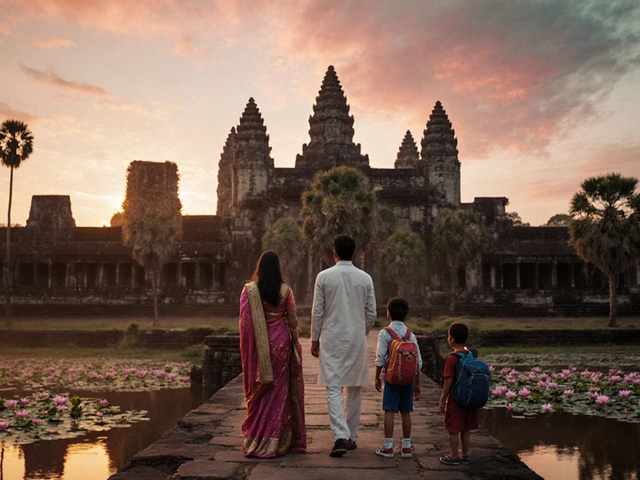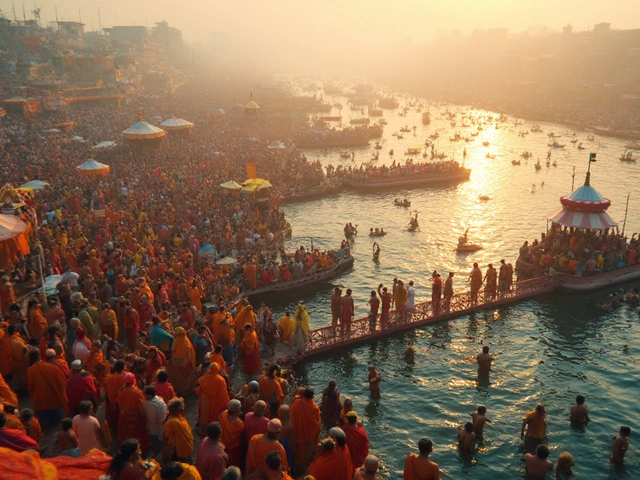If you’ve ever seen a city appear out of the desert, shimmering like it’s sculpted from sunlight, you’re probably thinking of Jaisalmer. This isn’t a scene from a fantasy film—it’s a real place, right at the edge of India’s Thar Desert. People call it the Golden City for good reason. Dive into the heart of Rajasthan, and suddenly, sand fades into narrow streets, honey-colored architecture, and an unbelievable vibe—one that feels frozen in time, but alive with stories. It’s not just about the buildings; this city wears its golden history on its sleeve, and every corner has something wilder to tell you.
Why Jaisalmer Is Called the Golden City
So, what’s with the Golden City nickname? It’s actually pretty literal. Jaisalmer’s signature is its yellow sandstone. From afar, every wall, fort, and house almost gleams when sunlight hits it. Back in the day, they mined this golden stone from local quarries—it was cheaper, right nearby, plus it kept houses cool in the desert heat. Now, that same stone turns the whole city into an enormous, sparkling sandcastle.
The story dates back to 1156 AD. Rao Jaisal, a Rajput king, established Jaisalmer to serve as a strategic trading outpost on the Camel Caravan Route. Pack animals and traders would snake through, hauling silk and spices across Asia. The city blossomed around Jaisalmer Fort, which rises like a mirage above the town. Unlike most Indian forts, people actually live inside Jaisalmer Fort—it’s still home to thousands, and it feels more like a living neighborhood than a tourist sight.
Over the years, it was raided, fought over, celebrated—mostly because it controlled all that rich trade. What’s wild is how the golden stone still works its magic today. Walk around at sunrise or sunset, and the whole city almost pulses with color. No filter needed. You’ll see kids playing cricket under arched balconies, lamp-lit bazaars, and cafés tucked against ancient ramparts.
The stone also plays a practical role. In the hottest months (think 45°C and up), the thick sandstone keeps the interiors surprisingly cool. But it’s the look that grabs you—golden walls, glowing minarets, and alleyways lit in warm tones that Instagram just can’t do justice.
Top Sights That Make Jaisalmer a Golden Gem
Jaisalmer packs a punch for a city its size. The big star, hands down, is Jaisalmer Fort. Not only is it one of the biggest fortresses in the world, but about a quarter of the city’s population lives within its labyrinth of tiny streets. Shops, cafés, little temples, and even guesthouses are crammed behind those ancient walls. At night, the whole fort lights up, almost floating over the city—a wild sight you won’t find anywhere else in India.
Then you’ve got the havelis. These are old merchant mansions, built when Jaisalmer was flush with trade riches. The most famous? Patwon Ki Haveli—a bundle of five adjoining homes, all covered in intricate carvings that’ll leave you pacing around with your jaw dropped. Look out for the tiny floral and peacock designs, all hand-chiseled a couple centuries ago. Each room is different and tells stories about the families who once lived there.
Another must-stop: Gadisar Lake. Originally built as a water reservoir for the parched city, now it’s the chill zone, with little shrines and chhatris (think: ornate domes). Rent a rowboat, watch fish dart by, or just hang by the shore. If you’re up for more history, drop by the Salim Singh ki Haveli, known for its peacock-shaped roof. Or check out Nathmal Ki Haveli—a pair of brothers built it, each working on one half, so the designs on each side don’t quite match up. Talk about sibling rivalry in stone!
But Jaisalmer isn’t just history on display. There’s a quirky energy to the bazaars in the old city—storefronts selling patchwork quilts, camel leather bags, and silver jewelry you won’t find in any mall. Try bargaining for a lamp encrusted in blue glass or pick up some local hand-embroidered textiles. And don’t miss the street food stalls—one bite of spicy kachori or sweet malpua (Rajasthani pancakes), and you’ll get why people fall in love with the city.
Get a sense of Jaisalmer’s unique blend of history, population and climate with this:
| Statistic | Details |
|---|---|
| Founded | 1156 AD |
| Population (2021 est.) | About 78,000 |
| Main Language | Rajasthani, Hindi |
| Highest Average Temp. | 44°C (June) |
| Famous For | Golden Sandstone Architecture, Jaisalmer Fort, Camel Safaris |

Jaisalmer’s Desert Adventures: More Than Just Sand
Now, you can’t visit the Golden City without getting up close with the desert. The Thar Desert isn’t just a patch of endless sand—there’s a whole world out here. Tourists flock for a camel safari, the old-school way to cross the dunes. Climb aboard at sunset, and soon your downtime is about watching the horizon turn pink and gold while camels plod along, snorting and grumbling. Nights out on the dunes are next level—think lantern-lit tents, local musicians (those raw, soulful desert songs!), fireside stories, and a sky carpeted with more stars than you’ve ever seen before.
If you’re in town for the Jaisalmer Desert Festival, then you’re in luck. Picture this: men in huge turbans racing camels, mustache contests, locals wrestling, and puppet shows. It’s one of the wildest and most photogenic festivals in Rajasthan. Pack a camera and enough space for memories you’ll want to show off back home.
But Jaisalmer’s desert isn’t just about high-season touristy stuff. Swap the main dunes for Kuldhara, a ghost village about 20 km outside the city. This was once home to Paliwal Brahmins, but everyone left overnight in the 1800s—no one really knows why (the legends get pretty wild). The empty homes and overgrown streets are spooky, especially in the soft morning or evening light. It’s a solid spot for those who prize the weird and unusual.
And if you’re the adventurous sort, hire a 4x4 to hit the less-touristy dunes near Khuri or Sam. The sand here swallows up noise, and you’ll often get whole fields to yourself, far from the crowds. Just don’t forget your water—desert heat here doesn’t mess around.
Feeling lost? Here are quick Jaisalmer desert adventure tips:
- Best time to visit the desert: October to March (way cooler, nights are chilly but perfect for bonfires).
- Always book camel safaris through registered agents or hotels—you want safe, reliable guides.
- For sunset scenes, ask about less-crowded dunes if you hate crowds (locals will help).
- Carry a scarf and sunglasses—the desert wind can whip up sandstorms in seconds.
- Local musicians love sharing stories—swap a cup of chai for a song if you can.
Essential Jaisalmer Travel Tips and Fun Trivia
Honestly, wandering through Jaisalmer is a bit like stepping back in time, but you don’t want to step too blindly. Pack light, because the sun gets relentless—even in the ‘cool’ months. Early mornings are magical; evenings are prime time for exploring markets, rooftop cafés, or catching fort views.
If you love photography, every street has potential. But the best moments happen just after sunrise—when the city’s waking up and golden light pools in the alleyways. Pro tip: Bring extra camera batteries; the heat runs them dry fast. If you’re up for street food, hygiene can vary—stick to stalls bustling with locals. Try ‘mirchi vada’ or ‘gatte ki sabzi’ with local breads in small dhabas, and don’t miss ‘bhang lassi’ if you’re curious and your stomach’s up for it.
Some practical stuff: Jaisalmer is safe, but like any busy place, watch your bags in the crowded markets. Most folks speak basic English, and everyone appreciates a friendly ‘Ram Ram’ (local greeting). Mobile networks are pretty good now, though you’ll still lose signal out in the deep desert—makes for the perfect digital detox.
Trivia lovers: Did you know almost every window grill you see in Jaisalmer’s old havelis is custom-made from the city’s sandstone? You’ll also spot quirky things, like intricately carved doors, secret courtyards, and balconies shaped like blooming flowers. And those old city walls? They’ve survived centuries of heatwaves, rainstorms, and sieges. Even now, the fort is under threat from water seepage, so there are conservation efforts running full-time (if you’re into architecture, you’ll appreciate the battle to save this UNESCO World Heritage site).
Finally, if you’re planning to see more than just ‘tourist Jaisalmer’, head to Bara Bagh cenotaphs outside the city. These carved memorials look mighty dramatic at sunset—almost haunted, but beautiful. And don’t skip the quirky Desert Cultural Centre, where locals run puppet shows dripping with Rajasthani humor.
Wrap it up? Here’s one thing—walk the city instead of zipping by on a tuk-tuk. The real Jaisalmer is in its backstreets, glowing – literally – with golden stories, and you’ll leave with sand in your shoes, color in your memories, and probably a ridiculous amount of photos. Unfiltered, unforgettable, and absolutely golden.



